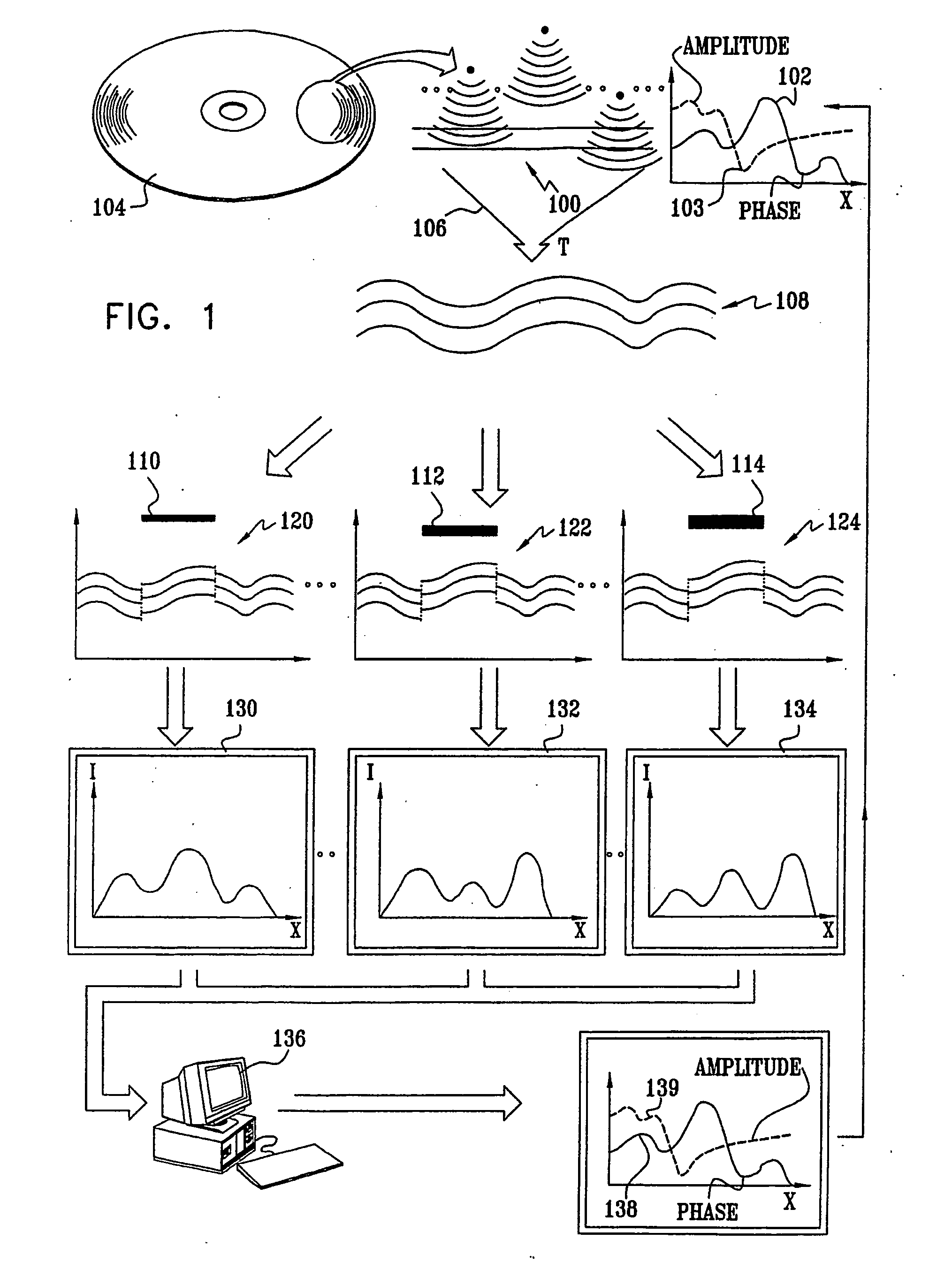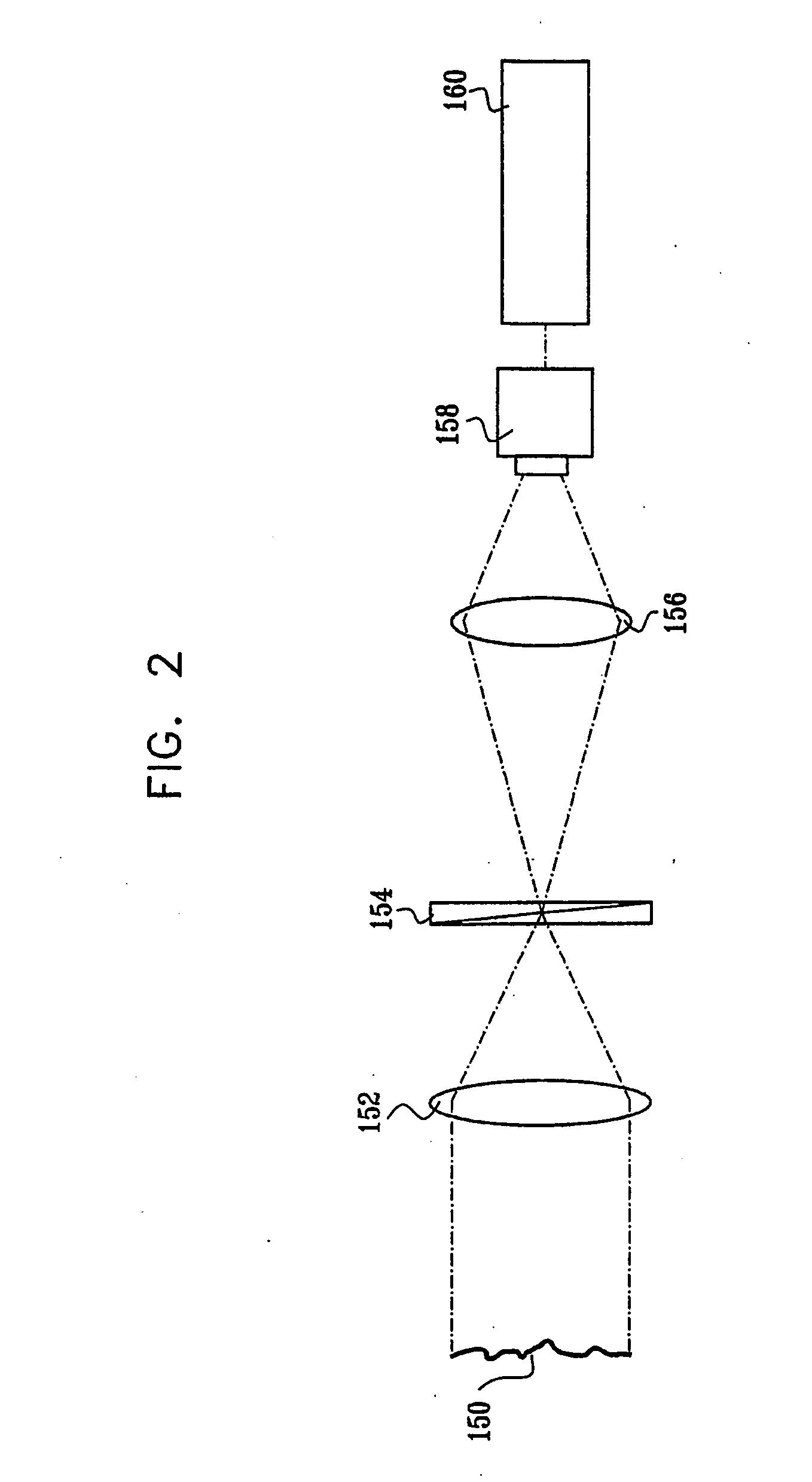Methods and apparatus for wavefront manipulations and improved 3-D measurements
a wavefront and wavefront technology, applied in the direction of instruments, using electrical/magnetic means, electric/magnetic measurement arrangements, etc., can solve the problems of poor spatial resolution, poor spatial resolution, and inability to accurately calculate the surface topography. , the effect of poor spatial resolution
- Summary
- Abstract
- Description
- Claims
- Application Information
AI Technical Summary
Benefits of technology
Problems solved by technology
Method used
Image
Examples
Embodiment Construction
[0164]Reference is now made to FIG. 6, which illustrates schematically elements of a first preferred embodiment of the present invention, enabling the detection and measurement of a multi-layer object by means of Ellipsometry, and using methods of phase measurement previously described above. The illumination light source 600 is placed in the optical system in such a way that the surface of the object 602 is illuminated through an imaging system such as a microscope objective 604 with a tilted parallel light beam 606, at a known angle of incidence relative to the normal to the surface of the object. The illuminating light beam 608 is reflected from the object's surface, and is refocused onto the detector 610, which is preferably a pixelated array, by means of the high numerical aperture objective lens 604. By this means, the reflected beam produces an image on the detector, containing information from over a large field of view. Because of the angle of incidence at which the measure...
PUM
 Login to View More
Login to View More Abstract
Description
Claims
Application Information
 Login to View More
Login to View More - R&D
- Intellectual Property
- Life Sciences
- Materials
- Tech Scout
- Unparalleled Data Quality
- Higher Quality Content
- 60% Fewer Hallucinations
Browse by: Latest US Patents, China's latest patents, Technical Efficacy Thesaurus, Application Domain, Technology Topic, Popular Technical Reports.
© 2025 PatSnap. All rights reserved.Legal|Privacy policy|Modern Slavery Act Transparency Statement|Sitemap|About US| Contact US: help@patsnap.com



